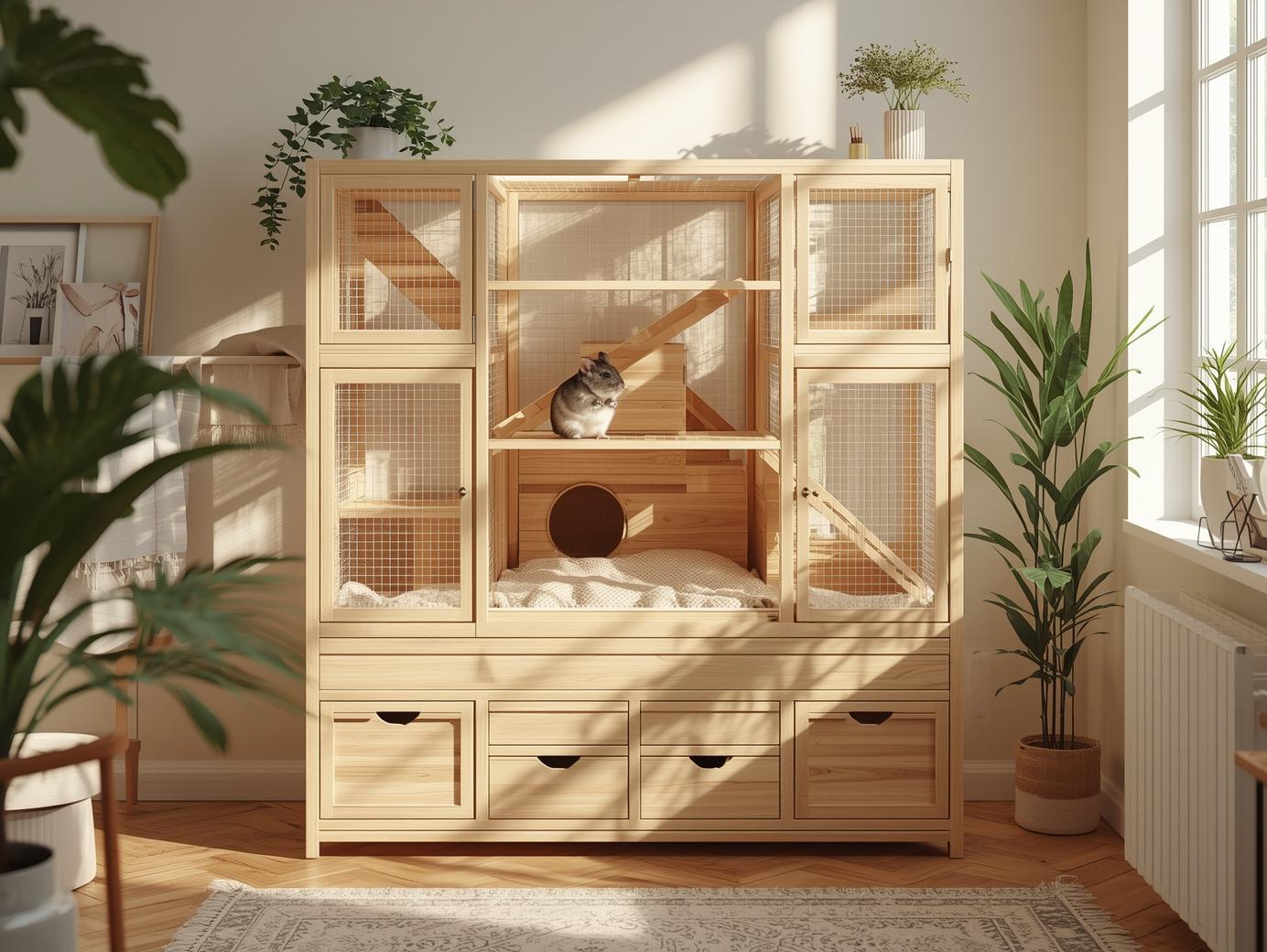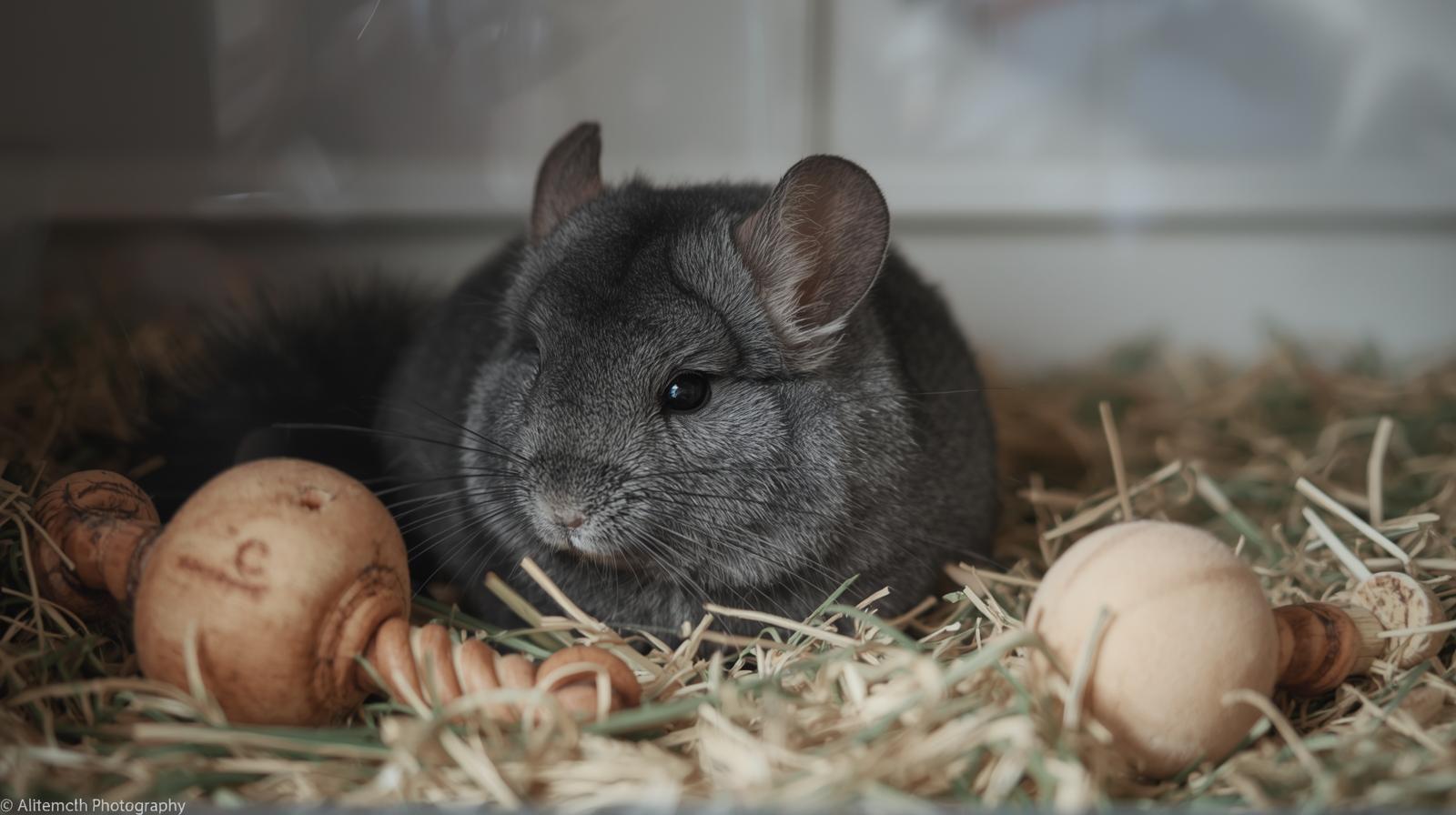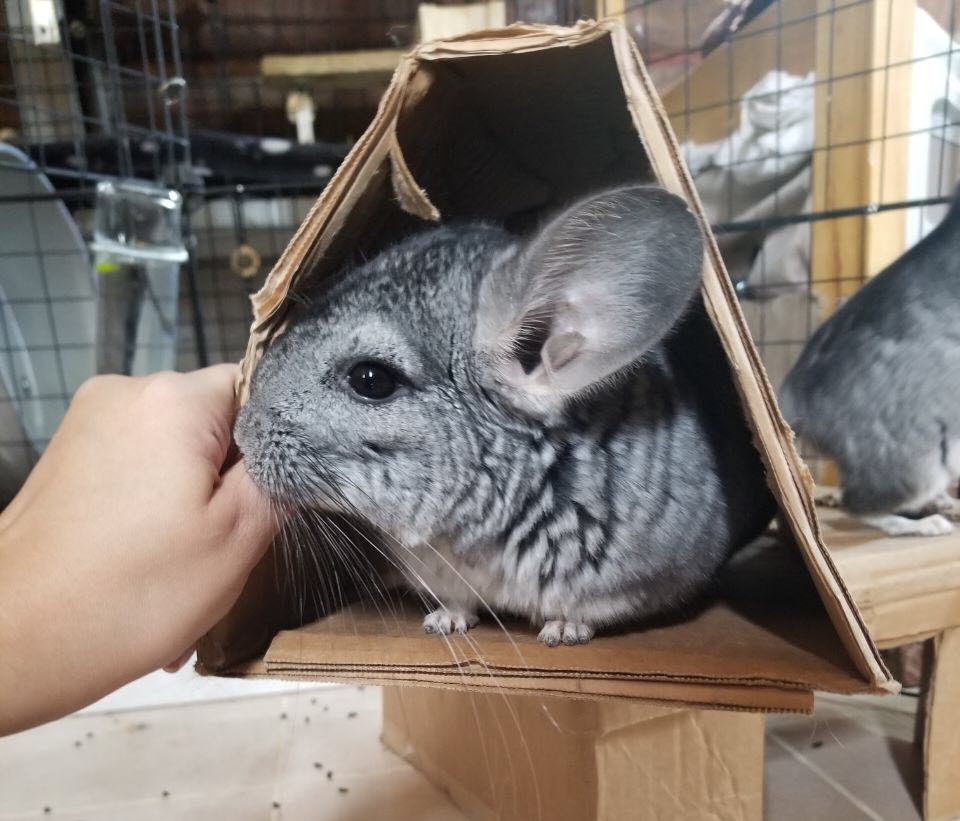If you’ve decided to bring home a chinchilla, you’ve made an awesome choice. These cute adorable guys are curious, active, and fun to watch. But before you bring one home, you’ll need to make sure you’ve set up a proper cage. A good setup keeps your chinchilla safe, comfortable, and entertained. Let’s go through everything you need to know about creating a great cage setup that works best for you and your pet.
Choosing the Right Cage
Choosing the right cage is one of the most important parts of setting up your chinchilla’s home. Their cage isn’t just where they sleep—it’s their entire world. Chinchillas are energetic and love to jump, climb, and explore, so a multi-level cage with plenty of vertical space is ideal.
A larger cage is always better, especially one with multiple levels, platforms, and shelves that encourage natural movement and curiosity.
Here are some general cage size examples to help you choose:
- Small Cage: Height 100 cm × Width 60 cm × Length 60 cm
- Medium Cage: Height 110 cm × Width 80 cm × Length 60 cm
- Large Cage: Height 120 cm × Width 100 cm × Length 70 cm
Note: If you’re in Argentina, large pre-made cages can be hard to find. In that case, consider having one custom-built by a local carpenter—it’s often more affordable and better quality.
For materials, wire cages are the most practical choice. Make sure the bar spacing is no more than 1 inch (about 2.5–3 cm) to prevent escapes or injuries.
Don’t underestimate how easily chinchillas can squeeze through small gaps. If the spacing is wider than 3 cm, they risk getting their heads stuck, which can cause serious injury and stress.
A metal base or tray is also essential. Wooden bases absorb moisture and odors, while plastic bases can be chewed and destroyed over time.
What to Avoid in the Cage
Avoid mesh flooring and plastic shelves, as both can cause injuries or be chewed apart. Chinchillas are natural chewers, and ingesting plastic can be dangerous. Stick to solid wood or metal materials whenever possible.
Picking the Right Location
Where you place your chinchilla’s cage is just as important as the cage itself. Chinchillas are very sensitive to heat, noise, and sudden changes in their environment, so location plays a big role in keeping them comfortable.
The ideal spot should be:
- Cool and quiet, ideally between 60–70°F (15–21°C). Anything above 77°F (26°C) can quickly become dangerous.
- Away from direct sunlight or drafts, since both can stress or overheat them.
- Far from kitchens or bathrooms, as steam and humidity can cause respiratory issues.
- In a calm area of your home, away from loud noises or busy activity.
Try to keep the cage somewhere your chinchilla can occasionally see you but still feels safe and undisturbed.
Note: If you’re a new chinchilla owner, set up the cage in a quiet, less active area for at least the first 24 hours so your pet can settle in. Ideally, keep the environment calm for about a week to help your chinchilla adjust comfortably to its new home.
Flooring and Bedding Setup
The flooring in your chinchilla’s cage needs to be both safe and easy to clean. Wire floors can cause sore feet or injuries, so cover them with solid shelves, tiles, or fleece liners to give your chinchilla a comfortable surface to walk and rest on.
Avoid using sawdust, cedar, or softwood shavings, as these can irritate your chinchilla’s lungs and skin. They also tend to hold moisture, which leads to odor and bacteria buildup.
Good bedding options include:
- Kiln-dried pine shavings – safe only when labeled kiln-dried, as this process removes the harmful oils found in raw pine.
- Fleece liners – washable, reusable, and the most eco-friendly long-term option. _(Highly recommended.)
Avoid: Paper-based bedding. Chinchillas sometimes eat it, and too much can upset their stomach and cause digestive issues.
If you’re using loose bedding like pine shavings, spread about 1–2 inches evenly across the bottom tray. For fleece liners, make sure they fit snugly and don’t bunch up, since chinchillas might try to dig or chew at the edges.
Note: If you’re using fleece, have at least two sets so you can rotate and wash them easily. Adding a thin layer of baking soda underneath the liner (never directly in contact with your chinchilla) can also help control odor safely.
Essential Cage Accessories
Once the basics are ready, it’s time to make the cage both functional and fun. Here’s what every chinchilla cage should include:
- Hideout house: Chinchillas love a cozy, dark spot to rest. A small wooden or ceramic house works perfectly.
- Water bottle: Use a glass bottle with a metal sipper tube, as chinchillas will chew through plastic ones.
- Food bowl: Heavy ceramic bowls work best since they won’t tip over easily. You can also use metal bird feeder bowls that hook securely to the cage to prevent movement.
- Hay rack: Keeps hay clean and off the floor. If hay is placed directly on the bottom, chinchillas will often pee on it and refuse to eat it—it’s common for them to pee or poop near their food.
- Dust bath container: Chinchillas clean themselves by rolling in dust. Provide a dust bath 3–4 times a week to keep their fur clean and healthy.
- Chew toys: Offer wood blocks, pumice stones, or safe branches to help wear down their teeth and prevent overgrowth.
- Shelves and ramps: Add levels for climbing and jumping. Wood or metal is fine; just avoid plastic, as it can be chewed and swallowed.
Start with a simple layout, then adjust as you get to know your chinchilla’s personality and habits. Some prefer higher shelves, while others spend more time on the lower levels.
Cleaning and Maintenance Routine
Chinchillas keep themselves naturally clean through grooming and frequent dust baths, but their cage still requires regular maintenance. Urine can release ammonia, which builds up over time and may irritate your lungs, making cleaning just as important for your health as it is for your chinchilla’s.
Maintaining a Healthy Environment
Keep the cage in a cool, dry, well-ventilated area. Avoid humidity or heat, as poor airflow can lead to odor and respiratory issues.
To keep things fresh:
- Offer dust baths 3–4 times a week.
- Air out the room daily.
- Make sure air circulates freely around the cage.
Daily Cleaning
Spend about 10–15 minutes a day doing quick upkeep:
- Remove uneaten food and wet hay.
- Spot-clean droppings and urine spots.
- Refill food dishes and water bottles.
- Shake out fleece liners or smooth bedding.
Weekly Cleaning
Once a week, do a full cage clean. Move your chinchilla to a safe playpen or carrier while you work.
Steps:
- Empty the cage completely.
- Wipe or wash shelves, trays, and accessories with warm water and white vinegar (safe and natural).
- Let everything dry fully before reassembling.
- Replace bedding, toys, and dishes with clean ones.
If odors appear sooner than expected, clean more often—especially if multiple chinchillas share a cage.
Regular cleaning keeps your chinchilla’s space fresh, odor-free, and safe for everyday living.
Playtime and Safe Exercise Area
Your chinchilla needs time outside the cage to play and explore — it’s just as important as the cage’s setup and location. Wherever you place their cage, make sure there’s also enough space nearby for supervised playtime.
Chinchillas feel safest playing close to their cage since it’s their comfort zone. It also makes it easier for you to keep an eye on them. That said, you can still let them explore other parts of your home too — just be extra cautious and always supervise them.
Set up a play area with:
- Chew toys, tunnels, and ledges for climbing and exploring
- A low wall or barrier to keep them from jumping out — chinchillas can jump up to 3 feet (about 90 cm) high, make sure you have well enclosed space!
- A pee pad or tray with bedding in a corner (they often prefer one spot to go)
Note: Always supervise your chinchilla during playtime. They’re quick, curious, and can squeeze into tight spaces or chew on wires. Make sure to hide cables, block off gaps, and protect any furniture you don’t want nibbled.
Before letting them out, close windows and doors and block any escape routes — chinchillas are fast and love to hide!
Temperature and Ventilation Tips
Chinchillas can easily overheat since their thick fur traps heat. Make sure your cage is in a cool, well-ventilated spot. Never place it near heaters, windows, or direct sunlight. If your home gets warm in summer, consider using a fan nearby (not blowing directly on the cage) or placing ceramic cooling tiles inside for relief.
Humidity is another factor—keep it below 50%. Too much moisture can cause fur and respiratory issues.
Lighting and Visibility
Chinchillas don’t need any special lighting, but it’s important to keep their cage away from direct light — not just sunlight, but strong indoor lighting as well.
A small LED lamp placed near (but not pointed directly at) the cage works great for visibility. You should always be able to see what’s going on inside, so avoid keeping their area completely dark. A soft, indirect light helps you monitor your chinchilla without bothering them.
Signs of a Good Setup
You’ll know your cage setup works when your chinchilla:
- Moves around freely between levels
- Uses its hideouts and shelves often
- Eats and drinks regularly
- Shows curiosity without signs of stress
If your chinchilla seems restless, hides constantly, or chews excessively, you may need to adjust the cage layout or location.


